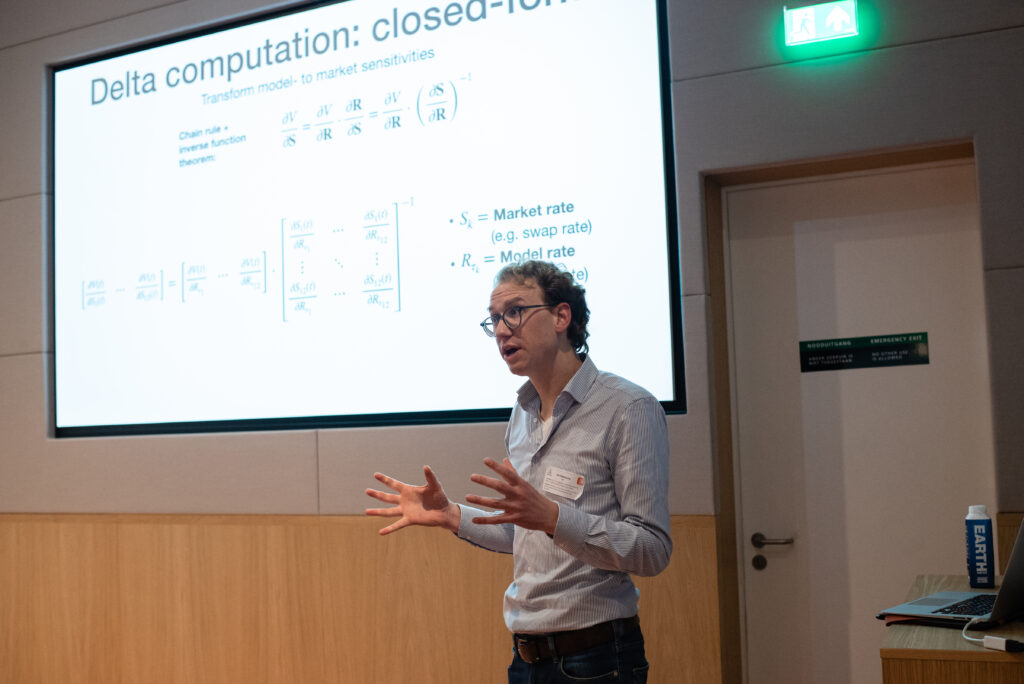Jori Hoencamp
ING
The Impact of stochastic volatility on Initial Margin and MVA for Interest Rate Derivatives

The slides shown at the event can be found here.
In this research we investigate the impact of stochastic volatility on future initial margin (IM) and margin valuation adjustment (MVA) calculations for interest rate derivatives. An analysis is performed under different market conditions, namely during the peak of the Covid-19 crisis when the markets were stressed and during Q4 of 2020 when volatilities were low. The Cheyette short-rate model is extended by adding a stochastic volatility component, which is calibrated to fit the EUR swaption volatility surfaces. We incorporate the latest risk-free rate benchmarks (RFR), which in certain markets have been selected to replace the IBOR index. We extend modern Fourier pricing techniques to accommodate the RFR benchmark and derive closed-form sensitivity expressions, which are used to model IM profiles in a Monte Carlo simulation framework. The various results are compared to the deterministic volatility case. The results reveal that the inclusion of a stochastic volatility component can have a considerable impact on nonlinear derivatives, especially for far out-of-the-money swaptions. The effect is particularly pronounced if the market exhibits a substantial skew or smile in the implied volatility curve. This can have severe consequences for funding cost valuation and risk management.
Jori Hoencamp is a PhD candidate at the University of Amsterdam under the supervision of Prof. Dr. Drona Kandhai. The PhD project is funded by the NWO Industrial Doctorates program and conducted at the Computational Science Lab (CSL) of the informatics institute (IvI), in close collaboration with ING bank. His research evolves around interest rate modelling and computational methods for credit risk management, aiming to bridge the gap between recent advances in computational finance and industry-driven challenges. The focus of the project has been on the numerical and model-related aspects surrounding MVA quantification for OTC derivatives. MVA reflects the expected lifetime funding cost due to posting initial margin, a type of collateral. This involves the simulation of future portfolio sensitivities, which is a demanding problem for financial institutions. At UvA he is involved in teaching the Computational Science master courses Computational Finance and Advanced Topics in Computational Finance and the daily supervision of Master projects. Since January 2023, he joined the Quants Analytics group of ING Bank as a front office quant. He holds a master degree in Mathematical Sciences, specialising in Probability, Statistics and Stochastic Modelling and a double Bachelor degree in Physics and Mathematics from the Utrecht University.
